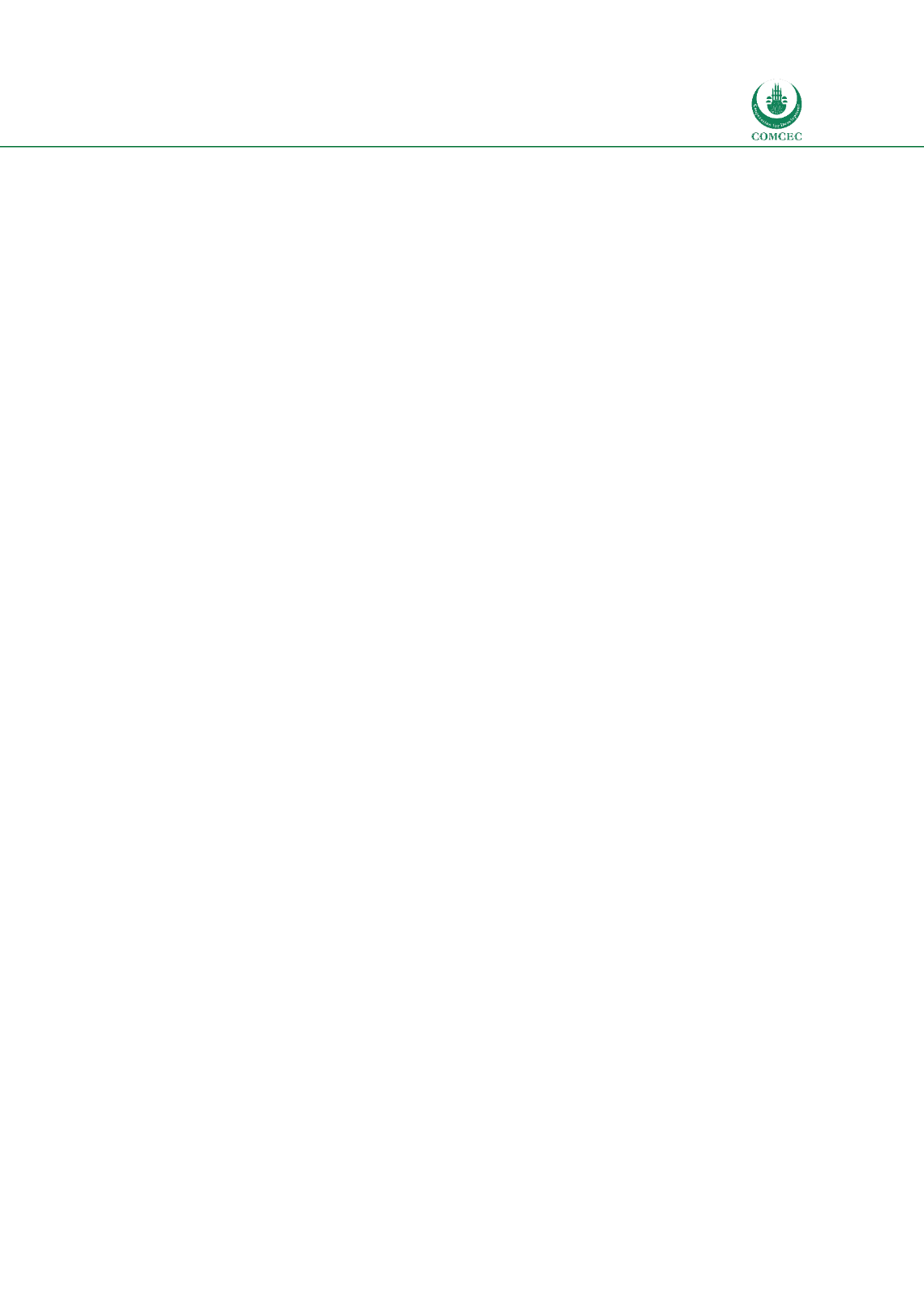

National and Global Islamic Financial Architecture:
Prolems and Possible Solutions for the OIC Member Countries
115
clarifications/amendments; and Standard No 12 on Shirka / Musharaka / modern corporations
with about a dozen clarifications/amendments.
Similarly, a four member Shariah board exists in the SECP consisting of prominent scholars and
a representative of the SECP (SECP A.R; 2015). The Board advises the SECP on the operations,
auditing and reporting of Islamic mutual funds, pensions and takaful operators etc. There are
regulatory requirements to have a Shariah board in takaful companies and takaful windows of
the insurance companies for the issuance of sukuk and for the fund management business. The
SECP has also adapted the AAOIFI Sharia Standards Nos 3, 8, 9 and 13 with some amendments
via a notification (SRO 45 of 2016). (SECP 2016b)
4.7.4. Liquidity Infrastructure
The Statutory Liquidity Requirements (SLR) for IBIs is the same as conventional banks as in
June 03 2011. The State Bank of Pakistan revised the definition of Time and Demand Liabilities
in August 2007 to exclude deposits with a tenor of less than one year from time liabilities and
included the same in demand liabilities. IBIs may create treasury pools for interbank
transactions through necessary authorization levels as defined in the pool management
framework. Such pools, however, need to be maintained separately due to the peculiar nature
of short term liquidity placements by the banks.
SBP’s strategy document for Islamic finance envisages working on providing multiple liquidity
management solutions for the industry by, among others, developing interbank market and an
Islamic discount window (SBP 2014). In this regard, Shariah compliant Open Market
Operations (OMOs) utilizing Ijara sukuk (Bai Muajjal of Sukuk) was introduced during 2015.
Similarly GOP has also purchased Ijara Sukuk from the Islamic banking industry on deferred
payment basis (SBP 2015b). To further encourage Islamic Financial Products, GoP announced
Sukuks issued by Karachi Shipyard and Engineering Works (KSEW), WAPDA, Lahore
Electricity Supply Corporation (LESCO) and National Industrial Parks Management Company
as SLR eligible (SBP 2007-08). There is a LLOR facility for Islamic banks that has been under
review for further improvement in 2015 (Iqbal 2015).
4.7.5. Information Infrastructure and Transparency
Accounting and Auditing Framework/Transparency and Disclosure
For development of the Accounting Standards for Islamic Modes of Financing, a committee was
formed by the Institute of Chartered Accountants Pakistan (ICAP) in 2005. This committee
reviewed the AAOIFI’s accounting standards with a view to adapt them to Pakistani
circumstances and, if considered necessary, to propose new accounting standards. So far, IFAS
-1, IFAS -2 and IFAS-3 have been developed for the financial reporting of Murabaha, Ijarah and
Mudaraba for investment deposits respectively. For all other modes IFRS is used.
The IBIs have to ensure transparency with regard to calculation and distribution of profits
among the depositors. IBIs are required to perform disclosure on their websites and notify the
board of each branch regarding the profit sharing ratio (PSR), weightages assigned to each
category of deposits, profit equalizing reserves (PER) and investment risk reserves (IRR), and
the actual periodic profit/loss distributed to each category of deposits for the period
concerned in at least two of the previous periods/years. The disclosures made in Notes to
















